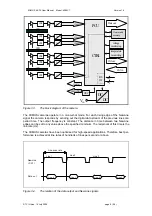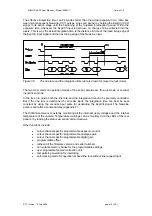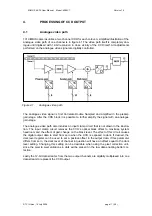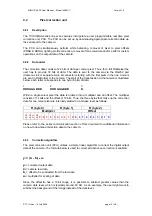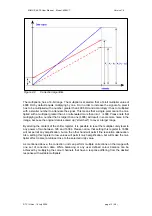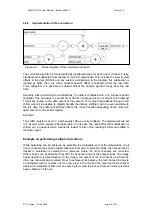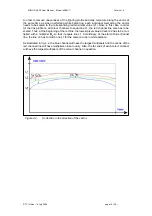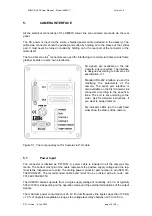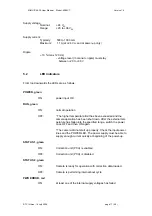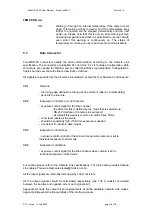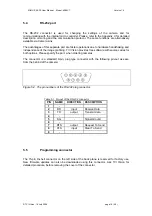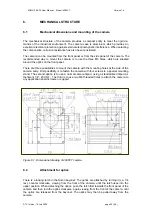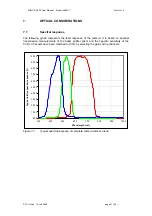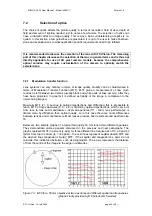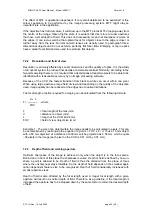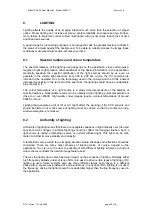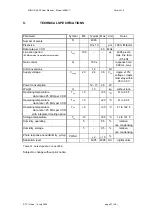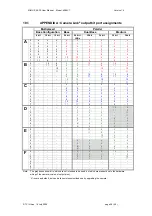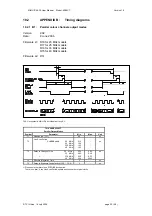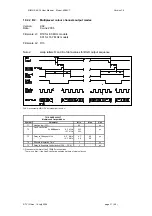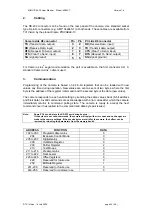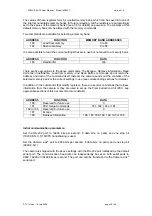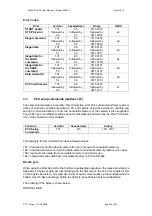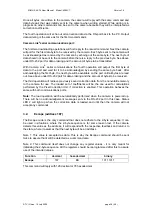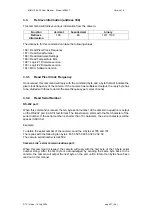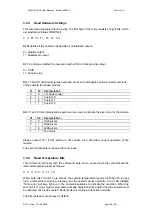
XIIMUS 4K CL User Manual. Model: 4096CT. Version 1.4
The effect of MTF is application dependent. If very small details are to be examined or fine
colour separation to be performed by the image processing system, MTF might play an
important role in the application.
If the objective has field curvature, it will show up in the MTF plot as MTF dropping away from
the centre of the image. Observing the plots, it is evident that this is true to wider apertures
that have a small depth of field. This does not necessarily mean that sharpness is worse at
the edges. It can just as well be that optimal focus for objects close to the edge is closer or
further away from the lens. Normal camera lenses are usually used to photograph three-
dimensional objects and do not exhibit a perfectly flat focal field. Enlarging or repro optics
have a planar focal field and are used to reproduce flat objects.
7.2.2
Resolution and field of view
Resolution is primarily affected by sensor dimensions and the quality of optics. It is the ability
of an optical system to produce finer details at a tolerable contrast. Normally, according to the
Nyquist sampling theorem, it is required that a detail spans at least two pixels to be able to be
identified with a reasonable accuracy by an image processing software.
Because of the CCD, the fastest transition from black to white can occur within one pixel.
When using large apertures, large field of view and depending on the quality of the objective
used, image quality can be reduced at the edges due to optical limitations.
The focal length of optics required for imaging can be calculated from the following formula:
d
x
L
F = ------------ , where
FOV
F
= focal length of the lens (mm)
d
= distance to object (mm)
L
= length of the CCD: 40.96 mm
FOV
= field of view; object size (mm)
Example 1 : The size of an object within the image needs to be calculated in pixels. This can
be accomplished by rearranging the equation to yield L = FOV x F / d. Thus a 10 mm object
with a 50 mm objective at a distance of 900 mm will be projected as 0.56 mm. which equals
~56 pixels in the image (each pixel on the CCD is 0.01 mm by 0.01 mm).
7.2.3
Depth of field and working aperture
Optimum sharpness of the image is achieved only when the object is in the focus plane.
Behind and in front of this plane the sharpness is worse. Depth of field is defined by how un-
sharp a point is allowed to be. Depth of field is thus the distance from the plane of focus
where the unsharpness stays tolerable. So the depth of field depends on the smallest appli-
cation dependent feature size to be recognised. Depth of field considerably increases with
smaller aperture sizes.
Depth of field is also affected by the focal length used. A longer focal length with a given
aperture will result in a shorter depth of field. Therefore, as a guideline, if the focal length is
increased the aperture has to be stopped down by the same factor to retain the desired depth
of field.
© TVI Vision, 14 July 2006 page 23 ( 56 )

